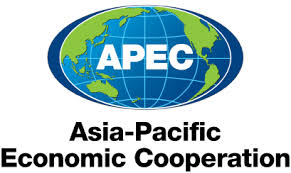What is the full form of APEC?
-
What is the full form of APEC?
-
The full form of APEC is Asia-Pacific Economic Cooperation. is an international forum for 21 member economies in the Pacific Rim.APEC promotes free trade all over the Asia-Pacific region. APEC was established in 1989 and headquartered in Queenstown, Singapore, it was created to misuse the expanding interdependence of the Asia-Pacific area. The main aim to start APEC is to create a new market for agricultural products and raw materials beyond Europe.
It is headed by a fixed-term Executive Director, who is selected for a time of three years. It arranges the things and gives specialized and advisory support and information management communication and public effort administrations.
Objectives of APEC
1. APEC guarantees the easy movement of products, services, investment and individuals across the borders.
2. APEC guarantees quicker customs Procedure at borders.
3. It guarantees a positive business atmosphere behind the bars.
4. APEC adjusts the norms and strategies across the line.
5. It expects to improve monetary and political comprehension among part nations.
Member countries
The APEC's 21 part nations expect to make more prominent success for themselves by advancing comprehensive, adjusted, feasible and secure development and territorial monetary incorporation, The countries that are members of APEC are:
1. Canada
2. Brunei Darussalam
3. Australia
4. Chile
5. Hong Kong
6. Indonesia
7. China
8.Japan
9. Malaysia
10. New Zealand
11. The Republic of South Korea
12. Mexico
13. Peru
14. Papua New Guinea
15. Russia
16. The Republic of the Philippines
17. Vietnam
18. Singapore
19. Thailand
20. Chinese Taiwan
21. The United States of America
A brief history of APEC
1. APEC was founded In 1989, the idea was firstly publicly broached by former Prime Minister of Australia Bob Hawke during a speech in Seoul, Korea.
2. After ten months, 12 Asia-Pacific economies met in Canberra, Australia, to build up APEC. The establishing countries were Australia, Brunei Darussalam, Canada, Indonesia, Japan, Korea, Malaysia, New Zealand, the Philippines, Singapore, Thailand, and the United States.
3. In 1991 China; Hong Kong, China; and Chinese Taipei joined APEC.
4. In 1993 Mexico and Papua New Guinea joined APEC.
5. In 1994 Chile acceded joined, and in 1998 Peru; Russia; and Viet Nam joined, taking the full membership to 21.
6. Somewhere in between 1989 and 1992, APEC met as a casual senior authority and ecclesiastical level exchange.
7. In 1993, previous US President Bill Clinton set up the act of a yearly APEC Economic Leaders' Meeting to give more prominent key vision and direction for cooperation in the region.
Milestones off APEC
1. In 2019 The APEC Chair releases the Host Economy Leader’s Statement, which celebrates the 30th year of APEC and echoes the APEC 2019 theme “Connecting People, Building the Future.”
2. In 2018 APEC chair releases the Era Kone Statement, which shows the work of member economies throughout year.
3. In 2016 affirm the part economies' trust in global exchange as an instrument for accomplishing positive monetary and social change.
4. In 2014 APEC focus on making a solid stride towards greater regional economic integration by endorsing a roadmap to translate the vision of the Free Trade Area of the Asia-Pacific (FTAAP) into a reality.
5. In 2012 APEC endorse an APEC List of Environmental Goods.
6. In 2010 APEC leaders provide a layout for the members to recognize economically integrated, robust and secure APEC community
7. In 2008 APEC Economic Leaders address the worldwide monetary emergency in the Lima Statement on the Global Economy.
8. In 2006 APEC promote the Ha Noi Action Plan to recognize particular actions and milestones to implement the Bogor Goals.
9. In 2003 APEC Members implement the APEC Action Plan on SARS and the Health Security Initiative to help the region prevent and respond to health issues.
10. In2002 APEC starts a Trade Facilitation Action Plan and the Statement to Implement APEC Policies on Trade and the Digital Economy.
11. In1999APEC Leaders promote the APEC Principles to increase Competition and Regulatory Reform with the aim of addressing the structural and regulatory weaknesses that contributed to the Asian financial crisis.
12. In1998 APEC Ministers have a mutual agreement on a Blueprint for Action on Electronic Commerce
13. In 1997 APEC underwrites a proposition for early voluntary sectoral liberalization in 15 areas and concludes that Individual Action Plans should be updated yearly.
14. In 1995 APEC adopts the Osaka Action Agenda which gives a plan for meeting the Bogor Goals by trade and investment liberalization, business assistance and sectoral activities, supported by strategy discoursed and financial and specialized participation.
15. In1993 APEC Leaders introduce the first time and outline APEC’s vision of “stability, security and prosperity for our peoples.”
16. In 1989 APEC started with 12 founding members.



